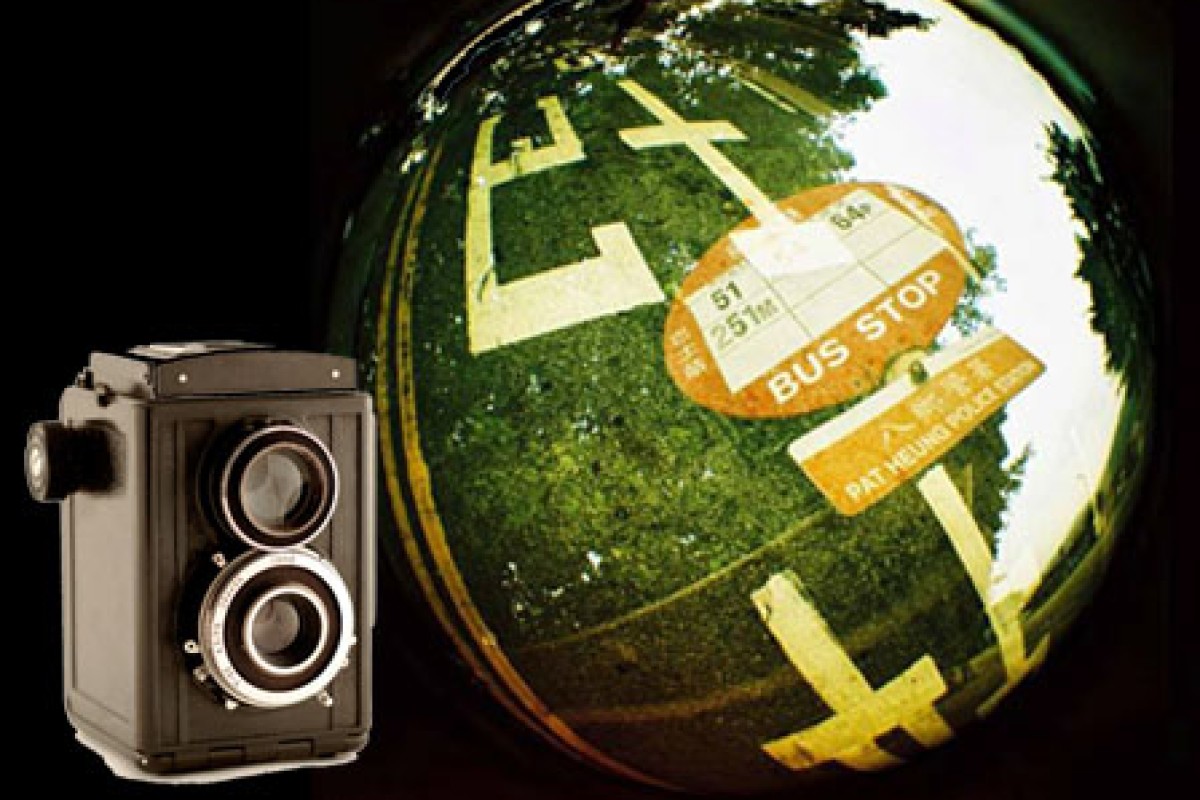 iii
iiiCity University students discover when it comes to Lomography, sometimes seeing is disbelieving, writes Zoe Mak
To most students born in the digital age, a trip back in time to the analogue era of photography holds little appeal. Imagine having to process the film from your camera before you know whether you've successfully snapped your friends celebrating or just recorded your thumb covering the lens.
However, a group of associate degree students have been using some old technology to shoot images that are sometimes beautiful, and always unexpected.
Earlier this month, Fay Li Yuen-fay and three fellow second-year students at City University organised a workshop on Lomography for their final year project.
This creative approach to photography was started by a group of Austrian students in 1991. On a trip to Prague they found a small Russian camera - the Lomo Kompakt Automat - in a shop. The pictures the camera took may have broken the rules of 'good' photography, but they were fascinating and wonderfully weird.
The four sessions in the 'Be A Lomographer' workshops organised by Li's group were hosted by two experienced Lomographers. They introduced the digital-minded students to the art form and explained how it worked.
'I was never really into digital cameras. A lot of our fellow students and friends had heard of Lomography but not many of them knew exactly what it was,' Li says. 'Everything just fell in to place. We had to do a final year project and we wanted to do something that interested us, so we thought of Lomography and we took the chance to approach them [the experienced Lomographers].'
Lomographic cameras have plastic bodies and, instead of digital memory, use traditional film or slides. Most of their lenses are made of plastic, which helps create images with a blurry tone.
Yu Ka-ho, 21, an experienced Lomographer and a second-year marketing student, hosted two of the workshops. He says the Lomographic camera can give you something a digital camera can't. 'Even though the camera is all manually controlled, you can do a lot with it,' he says.
By using film, Yu says, you can carefully leave a tiny gap in the back cover to let in light and create a whole different lighting effect in the shot. 'The outcome is always unexpected' he says, adding he owns three Lomographic cameras.
One of Li's fellow students, Hazel Lau Hei-lam, said the workshop was very interesting and helpful. 'I just started Lomography a while ago, after I bought my Diana F+. It was very interesting and I learned a lot,' she said.
According to Lomography microsites, the Diana F+ camera creates dreamy-toned images, more like an interpretation of reality than a simple photographic record. The camera can be fitted with fisheye, wide, close-up and telephoto lenses, among others.
As well as the workshops, Li and her group mates have also organised a lomography competition and exhibition.
Anyone can submit their Lomographs to [email protected], along with their name, contact number, occupation and caption. The deadline is Friday.
The winner will receive a Diana F+ Camera, the runner up gets a Diana Mini Camera, and third place receiving a Fisheye Camera.
All entries received for the Lomography competition will be showcased from March 24 to 31, in the exhibition at the Purple Zone, 4/F Academic Building, at City University in Kowloon Tong.
A different viewpoint
The trend of Lomography - photographic art which uses film and a strange camera - started in Hong Kong in early 2000.
Justin Tsui Man-yin, marketing co-ordinator of Lomography Asia, said Lomography is most popular among people aged between 20 and 40. She adds that the Lomography culture is not just about the art of photography, but the importance of capturing a moment.
'Our hardcore Lomographers like to be different and have a unique take on photography,' Tsui says.
A central belief among Lomographers is that 'the future is analogue', says Tsui: analogue technology enables Lomographers to take pictures which are unique in terms of colour and technique.
There is a huge range of different cameras available, from the first Lomography product, the Lomo LC-A, to cameras which enable you to take 'fisheye' photos and multiple shots in one picture. The most popular camera is the Diana F+, especially the Mr Pink model, which is especially popular with girls.
To prove how creative and versatile Lomography can be, here are some lomo pics by veteran lomographer Yu Ka-ho, who hosted the workshops organised by the students from City University of Hong Kong. There are also shots taken by Faye Li Yuen-fay, who took part in the CityU workshops.
More pictures
<!--//--><![CDATA[// ><!-- PDRTJS_settings_1421602 = { "id" : "1421602", "unique_id" : "default", "title" : "", "permalink" : "" }; //--><!]]>
